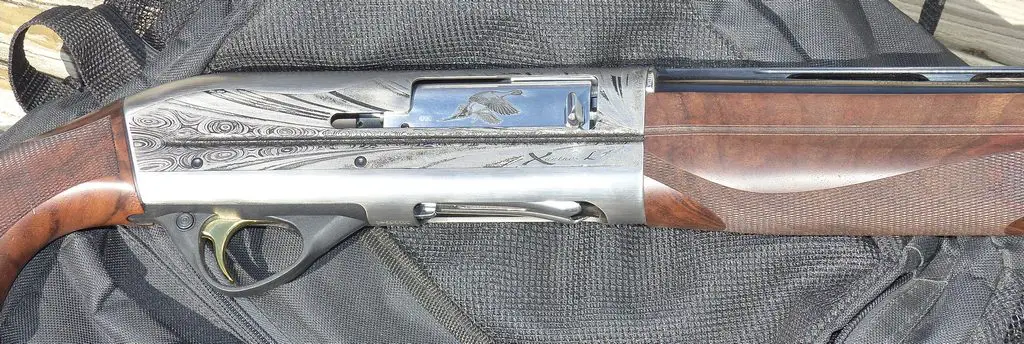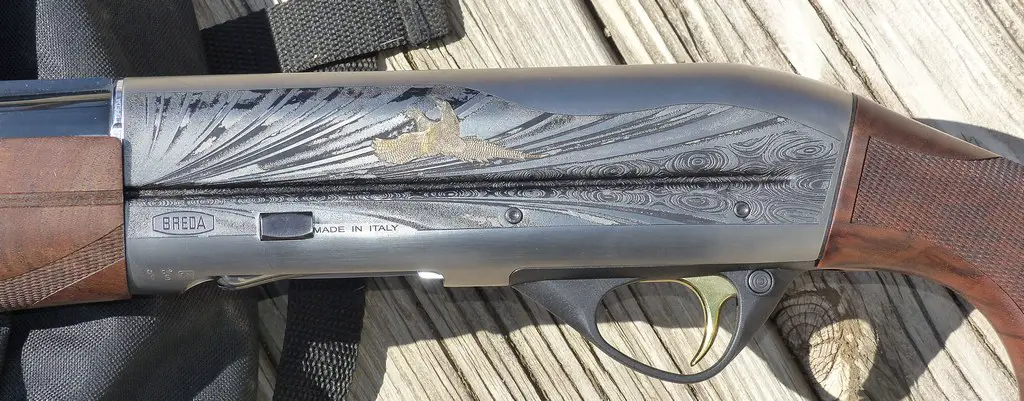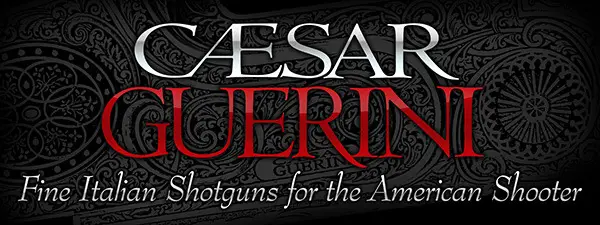Breda Xanthos Damasco Twelve Gauge Autoloader Part One

The supplied Breda Xanthos Damasco has a 30 inch barrel, a three inch chamber, and weighs 6 pounds, 15 ounces. The Xanthos has an excellent trigger, breaking at 3-3/4 pounds. The Xanthos Damasco retails for an impressive $2995. Breda has several other models of inertia guns at significantly lower price points. The Breda Chiron, that apparently uses the same steel receiver and action as the Xanthos, retails for $1449. The Breda Ermes Black, with a two-piece alloy receiver, has a MSRP of $1449 as well.
This is what Breda has to say about the Xanthos.
“The Breda Xanthos Semi-Automatic Shotgun uses the latest version of the inertia operating system originally conceived by Bruno Civolani, the founding father of modern inertia driven semiautomatic shotguns. Breda produces the Xanthos to the highest industrial standards. The result of Breda’s meticulous manufacturing processes is a shotgun that has superior accuracy and the highest ballistic output of any shotgun currently available on the market. The Xanthos is the only semiautomatic shotgun produced today that is made completely out of steel. Despite its sturdy steel construction, the Xanthos remains as light as a semiautomatic shotgun made of aluminum alloy. Breda’s barrels are drilled from the highest quality steel available. This gives Breda barrels a significant advantage over lesser smooth bore barrels. The Xanthos models are suitable for frequent hunting trips, as well as, recreational days on the skeet or sporting clay range. Xanthos models will reliably cycle loads from 2 ¾ inch 3 dram – 1oz. target loads to 3 inch duck loads.”
Some of the Breda claims take a bit of typical liberty with the actual truth. Surely, as far as steel-receiver autoloading shotguns go, Breda has heard of the Remington 1100 / 11-87? As far as the “made completely out of steel” claim goes, it does not past muster for the trigger guard isn't so much as alloy, but plastic. As for the claims of accuracy and “the highest ballistic output of any shotgun,” someone is going to have to explain to me what in the world they are talking about . . . unless Breda just has a unique sense of humor.
| Item |
Detail |
|---|---|
Functioning |
Semiautomatic Shotgun – Breda Technology Inertia System |
Locking System |
By Vertical Lug |
Gauge |
12 Gauge |
Chamber |
76mm | 3" magnum |
Stock and Fore-End |
Selected Fancy Walnut | Oiled Finish |
Drop at Heel |
55 | Adjustable to 50/60 |
Receiver |
Made in Steel by Breda | Exclusive Industrial Process |
Receiver Finishing |
Damask engraving on both sides of the receiver; In the middle stands a flying golden pheasant. Manual polishing of the entire surface and subsequent chemical treatment in a nickel plating bath and ruthenium. The engraving is signed by master engraver "Bottega di Giovanelli". |
Sight |
High Luminosity Fiber Optic |
Safety |
Transverse button behind the trigger with red "ready to shoot" signal |
Trigger Guard |
Technopolymer Matte Finishing |
Trigger Weight |
Between 2.2 and 2.5kg |
Recoil Pad |
High Density Pad Modeling with Stock |

This Breda Xanthos Damasco has a beautifully figured and beautifully finished stock set. The steel receiver is unique in inertia guns and engraving applied to steel invariably looks better than when attempted on aluminum alloy. The chokes are interchangeable with the Benelli "Crio Plus" style. The stock is adjustable for drop and shims are supplied. The recoil pad isn't much of a pad at all, just a piece of hard rubber. The Breda USA website says the Xanthos has a two year warranty, but the owner's manual states that it has a three year warranty. Warranty work, if needed, is supplied by Cole Gunsmithing.
The 30 inch barrel on the Xanthos Damasco is a bit much for an inertia gun. With the long receiver of inertia actions, 26 inch barrels (and even 24 inch) are more appealing to me, for my uses. Breda lists 24, 26, 28, and 30 inch barrels as available although I get the impression the 24 inch barrel has iron sights. Some will be put off by the sticker shock of the Damasco, but this is the top of the line model. I've seem standard grade walnut Xanthos models go for $1125 street price or thereabouts, a much more attractive level for what is ostensibly a hunting gun with some use for casual clays. Mechanically and functionally, all trim levels of the Xanthos are the same.
The modern inertia action has been around for a very long time: see United States patent #3,447,417 filed February 27, 1967, patented June 3, 1969, by Bruno Civolani. Shopped to several manufacturers without success, it was finally assigned to the Benelli Brothers motorcycle company (long defunct) and served as the basis for their firearms venture. Benelli Armi SpA was founded in 1967. Benelli firearms failed as well as an independent entity, being absorbed into the Beretta family in 2000 where it still resides. As the Civolani patents have expired, now anyone who wants to make an inertia gun can, and that's why there is a glut of inertia guns on the market from Girsan, Weatherby, SKB, Browning, as well as the common trio of Beretta brands: Franchi, Stoeger, and Benelli.
The Breda Xanthos not only uses a steel receiver, but has a heavier bolt that is claimed to reduce recoil, with a top locking lug. Whether one design is an advantage over the other is hard to say, as the latest offering from Breda is their 930i Sporting which uses a two piece alloy receiver. Prices for inertia guns are currently all over the map. For example, the current Benelli 25th Anniversary Super Black Eagle has a nosebleed MSRP of $3199. The plastic (“black synthetic”) Benelli M2 has an MSRP of $1139.
The initial impressions of the Breda Xanthos Damasco are that it has a remarkably better trigger, better polish and bluing than most autoloaders, and generally better fit and finish than most autoloaders as well. The Xanthos also has very good shell handling and includes a magazine cut-off as well.
On the not so hot side, the lack of any attempt at a reasonable recoil pad is a puzzlement. Although the Xanthos shoulders and swings nicely, the reach from the pistol grip to the physical trigger is almost too far, forcing some shooters to use just the very tip of the forefinger to pull the trigger. More to come in Part Two.
Copyright 2016 by Randy Wakeman. All Rights Reserved.












